Using leading lines in landscape photography can be a powerful compositional tool that can make the difference between an okay snapshot and a truly engaging photograph. Leading lines help to create a natural flow through the image, help give the illusion of depth and dimension to the two dimensional medium of photography, as well as gently guiding viewers deeper into your photograph.

Photos via Jeff Sinon
Discover how using leading lines can transform an image.
Rather than simply looking for a brief moment and then moving on, the creative use of leading lines can keep a viewer engaged longer and have them enjoy your photograph more. And that’s what we as photographers want, right? We want people taking a good long look at our photographs and becoming totally immersed in the experience.
Incorporating the use of leading lines into your landscape photography can do just that.
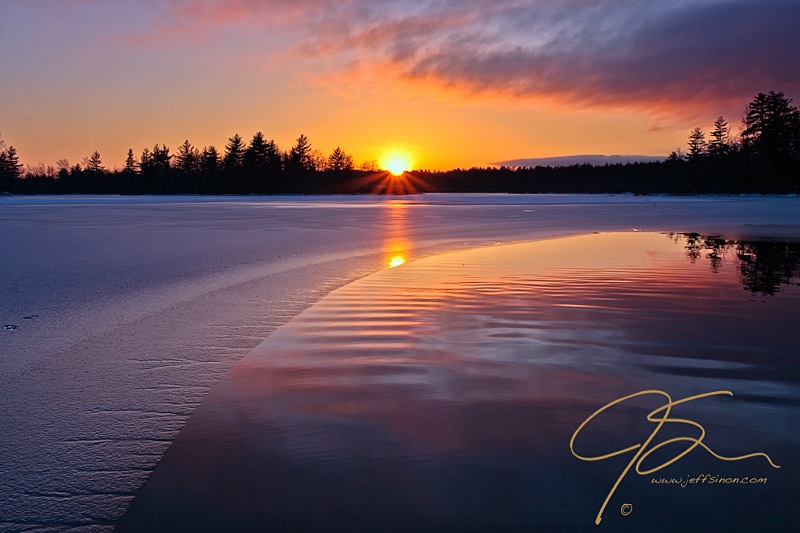
Lines, lines, everywhere lines
The graceful arc formed at the edge of the ice on a partially frozen pond, a pier cutting diagonally out from shore, the S-curve of a meandering stream or a gently winding country road, all these and more make great leading lines to include in your landscape photography.
When composing a photograph, one of the first things I look for is how the scene is laid out: What natural or man-made lines might there be?
Then I try to determine how I can use these lines, natural or man-made, to best tie the foreground and background together or lead to the main subject of the photograph.
Keep your eye out for these leading lines

#1: The obvious
Obvious leading lines like roads, the course of a stream or a line of fence posts are the easiest to see and use. They are easy to place, so they provide a natural flow through the photograph.
Notice in the above photo the cedar log railing and gently curving road winding under a brilliant canopy of autumn color as it disappears into the forest.
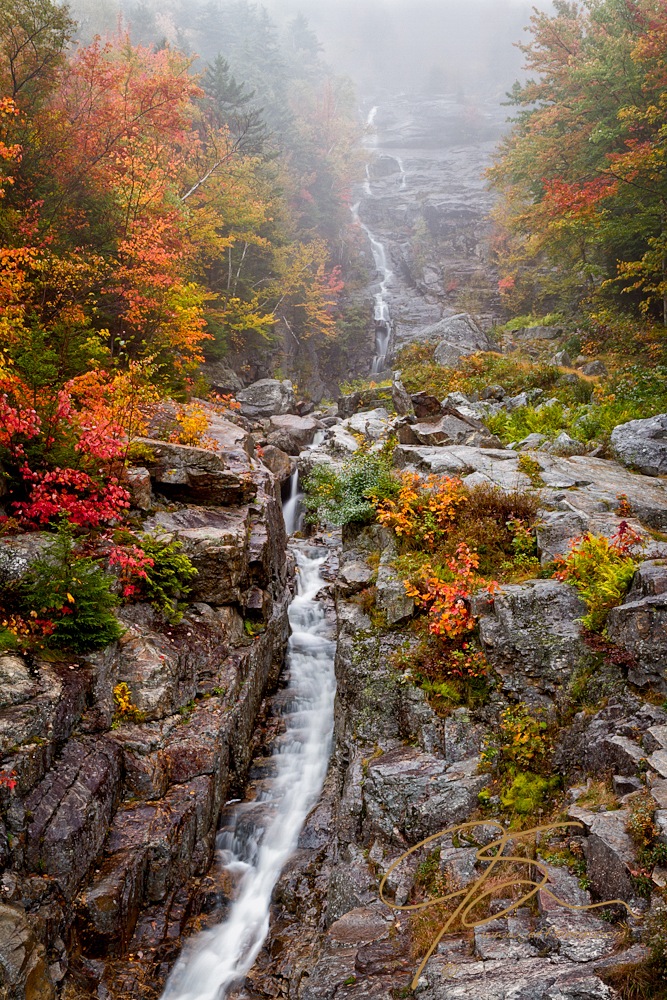
The line of Silver Cascade in New Hampshire is another example, as it appears from the mist, following a course cut deep into the granite.
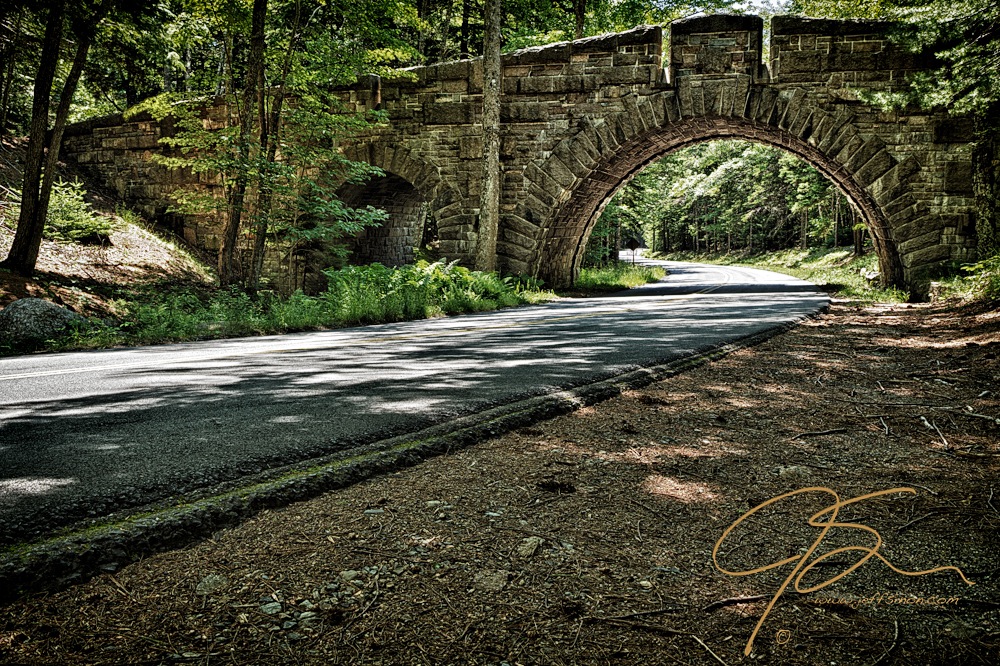
Or, the ultra-obvious leading line created by Stanley Brook Drive in Acadia National Park as it passes under one of the many stone arch bridges scattered throughout Acadia.
The above are examples of what I refer to as the “no-brainer” leading lines. Easy to see when composing photos and easy for the viewers to follow.
One tip I’d like to offer, especially when using more obvious leading lines: Avoid having your leading line slice directly through the middle of the frame, either vertically or horizontally, cutting the image in half. Rather you should have them start near a lower corner and flow through the photograph towards the upper opposite corner.
#2: The almost imperceptible
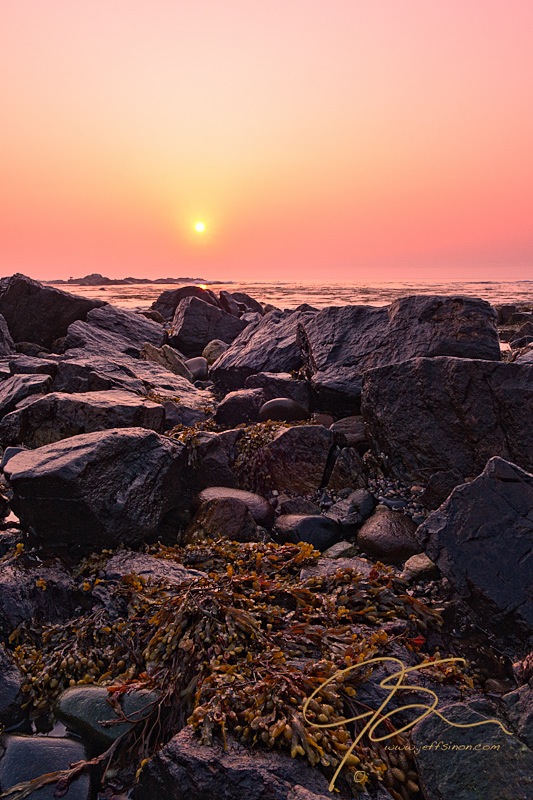
Not all leading lines need to slap you in the head and shout, “Here I am, follow me!” in order to be very effective at creating an engaging photograph.
In the photo above, taken along the Rye, New Hampshire seacoast one very foggy morning, I used a natural sightline, or valley if you will, among the jumble of shoreline boulders to bring your eye from the seaweed in the foreground towards the rising sun. The natural fall of the rocks provided an excellent, yet subtle line for the viewers eyes to follow.
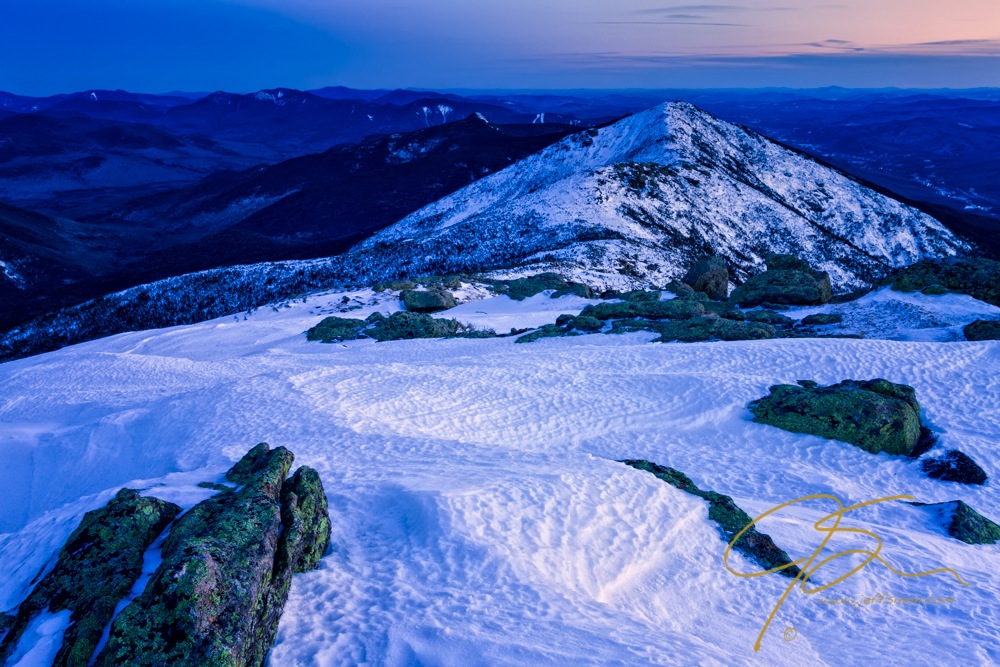
A high mountain ridge line can work very well at creating depth and leading you deeper into the photograph.

Another quite subtle leading line is the gentle S-curve of the bright pink water lilies, as they recede into the background in this photo of one of my favorite wildflowers.
Quite often, I feel these less obvious leading lines are more effective because of their subtlety. The viewer is still following the path through the image in the way I intended, without them ever realizing it.
Putting it into practice: Start simple
If you’re unfamiliar with using leading lines in your landscape photos, my suggestion is to start simple, start with the obvious.
Here’s a list of things to look for when composing your next landscape photographs:
- Roads, paths, or hiking trails.
- The S-curve a stream or river.
- Bridges, docks and piers.
- Anything that repeats itself , such as garden rows, utility poles or fenceposts.
Pretty soon, with enough practice incorporating these obvious leading lines in your landscape photography, you’ll start to more easily recognize the less obvious, more subtle possibilities when framing you landscapes.
If you’re looking for more tips on creating amazing landscape photography, check out the Craftsy class Shooting Intimate Landscapes, where you’ll learn how to turn seeming ordinary landscapes into extraordinary images!

Share tips, start a discussion or ask one of our experts or other students a question.
No Responses to “How to Use Leading Lines In Landscape Photography”